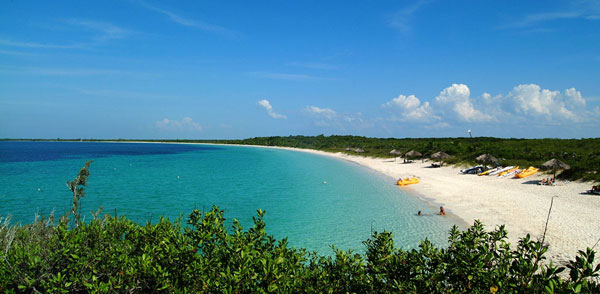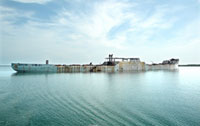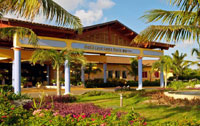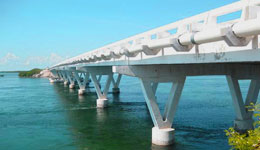Mother Nature has made Santa Maria Key a natural jewel, one of the most beautiful of the Cuban archipelago. It is part of many small islands located in the northern coast of the province of Villa Clara. They link with the rest of the territory through a 45 kilometer road close to the cities of Remedios and Caibarien.
Cayo Santa Maria presumes for the beauty of its surroundings and is a purely ecological destination. For its exuberant and important vegetation, this key was declared a Biosphere Reserve by UNESCO. The territory has an exclusive diversity of flora and fauna species, many of them are endemic of Cuba.
There are massive colonies of flamencos, seagulls, lizards, iguanas and muleteer bird; while the marine bottom is populated with algae, molluscs among other species. The key also has vestiges of pre Colombian cultures in caves close to the beaches, accompanied by beautiful sub aquatic landscapes.
Currently, Santa Maria and the neighboring keys are in a development process for international tourism.
The islet is 13 kilometers long and 2 wide with 11 kilometers of excellent beaches. There is a coral barrier that allows easing the beaches from strong wings and avoiding the uncomfortable waves making this area unique for all those that choose it as their destination.
The area offers all types of services for your entertainment, like a diving center and sites where the lovers of this sport can enjoy the marine bottom while Marina Santa Maria offers excursions on boats to get a first hand look at its surroundings and the neighboring keys like: Las Brujas, Ensenachos, Frances, Majá, Las Picúas among others.
You can lodge at Meliá Cayo Santa Maria, a 5 Star Hotel or in the Sol Cayo Santa Maria Hotel, both managed by the Sol Meliá hotel chain of international recognition. In addition you can lodge in Villa Las Brujas which is made up of a complex of bungalows connected by a wooden bridge.

Things to do
Attractions
- ✓ Dolphinarium Cayo Santa Maria
- ✓ Museo de la Industria Azucarera, Caibarien
- ✓ Cayo Santa Maria.
- ✓ Cayo Las Brujas
- ✓ Playa Megano
- ✓ Playa Ensenachos
- ✓ Nautical Center
- ✓ Santa Maria Beach.
- ✓ Plaza La Estrella.
- ✓ Melia Cayo Santa Maria Spa
- ✓ Melia Buenavista Spa
- ✓ Plaza Las Dunas
Jardines del Rey coral reef
This is the second largest in the world, exceeded only by the Great Barrier Reef in Australia. Its 24 dive sites are ideal for scuba diving and underwater photography.

Buque San Pascual
Known locally as El Pontón, this ship built from reinforced concrete ran aground in 1933 just off the Cayo Francés. It is treated as one more islet, with an enviable position for appreciating the attractions of the region.

Hotel Melia Santa Maria





